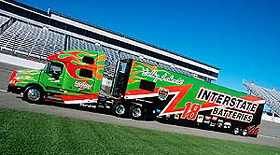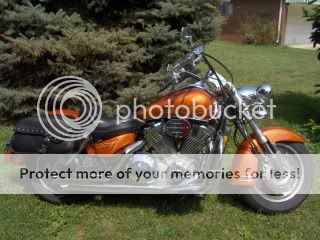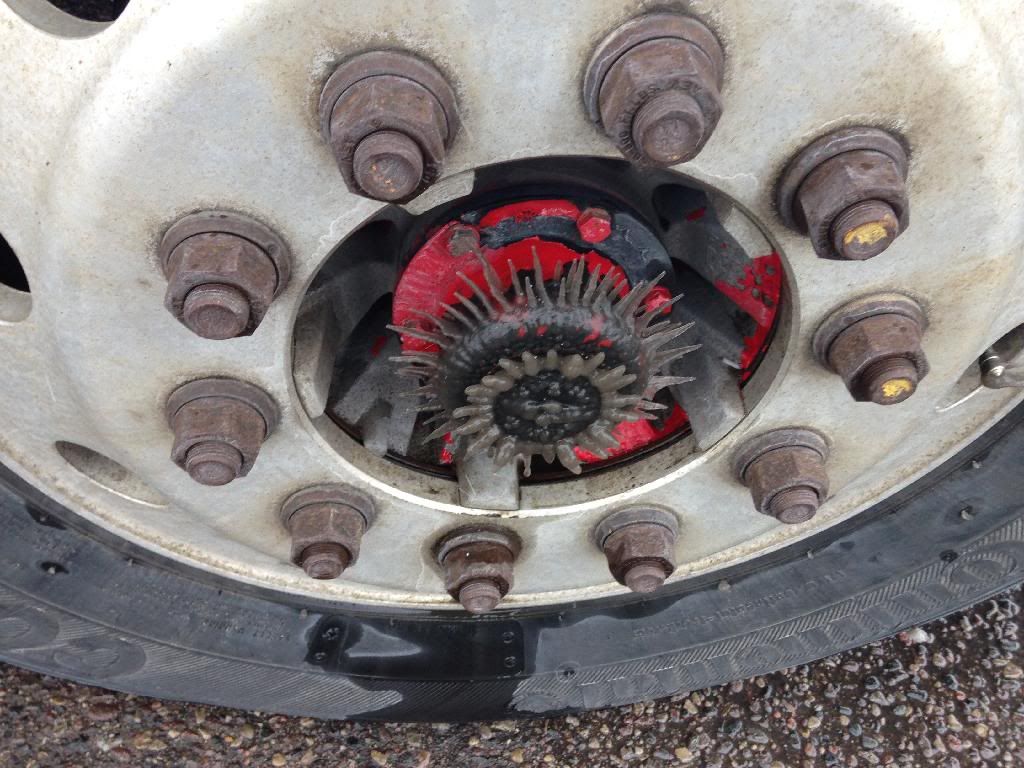Braking Question
Topic 2581 | Page 1

High rpms with tranny in a low gear .
Where are the RPMs at when it is near the governed RPMs? High or low?
When they refer to the truck being "governed" they're normally referring to the speed the truck is limited to when running on the highway. But in this case they're referring to the engine RPM's being governed (limited) to prevent damage to the engine from over-revving. So when they say "near the governed RPM's" they mean near the upper limit of RPM's that the engine is allowed to turn.
So indeed Schism is correct - Jake Brakes are most effective when you're running at high RPM's with the transmission in a lower gear.
The Jake Brake actually limits the amount of exhaust that can flow out of the engine. So the Jakes are creating a back-pressure against the piston which is trying to prevent the engine from turning. So the faster the engine is turning (all else being equal) the more exhaust is trying to flow out of the engine so the more effective the Jake Brakes are.
And because the Jake Brakes are trying to slow the engine, which is hooked to the tractor drive tires, being in a lower gear gives you greater leverage against the spinning drive tires.
So the lower the gear and the higher the RPM's the more effective the Jake Brakes are.

It is more effective in 6th gear or below at 1100 to 1500 rpm's with a heavier load behind it on most trucks. Different trucks will act different with a Jake brake. The Volvo for example will kick in as soon as you let off the gas with the brake engaged where the new international Pro Star you need to push on the service brakes before it will kick in. The older trucks have a stronger Jake Brake than the newer rigs.
It is more effective in 6th gear or below at 1100 to 1500 rpm's
Anything below 1500 RPMs isn't going to do much other than make noise. Maybe they've come up with something in the past few years that gives them a lot more power at lower RPM but from my experience The Jake isn't worth putting on below 1500 RPM. I usually kept it around 1700-1900 or so.

It is more effective in 6th gear or below at 1100 to 1500 rpm's
Anything below 1500 RPMs isn't going to do much other than make noise. Maybe they've come up with something in the past few years that gives them a lot more power at lower RPM but from my experience The Jake isn't worth putting on below 1500 RPM. I usually kept it around 1700-1900 or so.
Yes Brett the Jake's have changed over the years.For one they barely make a sound so easy to use even in the city in "No Jake Brake" areas. I use my Jake's as my primary braking. While useless in low gear(2 thru 5 on my truck.0 to 20 mph.) its mostly used 6 thru 10 gear, 25 to 65 mph, at 1300 to 1800 rpm. And works better the higher the RPM but will work on my truck from 1300 to 1800.

new international Pro Star you need to push on the service brakes before it will kick in.
The time spent with my trainer was in a Pro Star with about 30,000 miles on it so it was pretty new. I never had to touch the service breaks to get the Jake to start doing its job. Not sure what the difference would be.
And as far as RPM's I am rarely over 1500 which is where I was told to try to stay under. Ive had some pretty heavy loads, one I even had to watch how much fuel I put in or I would be illegal, and have had no trouble controlling speed in the mountains with just the occasional stab breaking. Granted I do not think I have yet had the chance to run some of the larger mountains with longer and steeper downgrades lol.
Have I been going down in too high of a gear?
Woody
Have I been going down in too high of a gear?
My general rule of thumb on dry pavement is to go down the hill in whatever gear will allow your Jake Brakes to hold you back without using the foot brake at all. If you have to use it once in a while, no problem. Sometimes on a 9 or 10 speed there isn't quite that "perfect" gear so you either go with a gear that will allow the Jake Brake to hold you back entirely or go one gear higher where you have to hit the brakes once in a while.
As far as the maximum RPM you want to turn that engine with the Jake Brakes on, I'll let you guys ask your mechanics about that so I don't get a bill for $10k from a blown engine. My rule of thumb was to keep it about 100-200 RPM below the maximum governed RPM. So if the engine would rev to 1900 I would use the Jake up to about 1700.
But every engine & Jake Brake combination can be different so it's best to find out from your company's mechanics what the safe ranges are for that kind of stuff.

As far as the maximum RPM you want to turn that engine with the Jake Brakes on, I'll let you guys ask your mechanics about that so I don't get a bill for $10k from a blown engine. My rule of thumb was to keep it about 100-200 RPM below the maximum governed RPM. So if the engine would rev to 1900 I would use the Jake up to about 1700.
But every engine & Jake Brake combination can be different so it's best to find out from your company's mechanics what the safe ranges are for that kind of stuff.
You are right on the money Brett (no surprise there lol). As long as you keep it at least 100 rpm off the governor on the way down, you should be fine. Just remember not all engine and Jake combinations will react the same!
Lastly- this is my personal advice as a diesel tech, your company's policies should ALWAYS be followed, and I'm not responsible if you grenade your engine/ tranny.

Great information! Thanks guys and gals! I know what a jake brake is and I love the sound of the old school ones but why do they call it a jake brake?
New Reply:
New! Check out our help videos for a better understanding of our forum features

















Preview:
This topic has the following tags:
Jake Brake Safe Driving Tips Tips For Braking Truck Equipment







 TT On Facebook
TT On Facebook
From the book:
You must use the braking effect of the engine as the principal way of controlling your speed. The braking effect of the engine is greatest when it is near the governed RPMs and the transmission is in the lower gears. Save your brakes so you will be able to slow or stop as required by road traffic conditions.
Test question:
Many commercial vehicles are equipped with an engine brake to help slow down without applying the service brakes. When is the engine brake most effective?
Where are the RPMs at when it is near the governed RPMs? High or low?